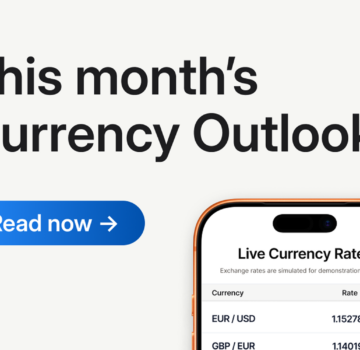Managing business expenses has always been an essential responsibility for finance teams. And as payments get faster and more diverse, traditional expense management methods are no longer enough.
Rising operational costs, global expansion, regulatory complexities, remote work, and digital-first business models have all made it more challenging than ever to track, control, and optimize spending.
Yet many businesses still rely on outdated processes such as manual data entry, spreadsheets, and disjointed payment systems. These inefficient methods increase the risk of errors, compliance issues, and even fraud. They also make it difficult for finance teams to get a real-time view of spending across different departments and locations.
In an era where businesses must be agile and data-driven, finance leaders need smarter solutions to ensure financial oversight, maintain compliance, and improve cash flow.
This is why spend management platforms are gaining traction among accountants and finance professionals. These comprehensive solutions help businesses automate, centralise, and optimize their spending processes. This article explores how these now-vital tools reduce inefficiencies, improve visibility, and drive smarter financial decision-making for SMEs.

The limitations of traditional expense management
Historically, companies have used a handful of systems and manual processes to manage business expenses. Finance teams often toggle between separate tools for:
- Accounts payable: Processing vendor invoices and supplier payments.
- Employee expense reimbursements: Handling claims for travel, meals, and other work-related costs.
- Corporate card management: Tracking business spending across multiple employees.
- International transactions: Managing cross-border payments and foreign exchange fees.
- Payroll: Paying staff locally or globally, typically through a connection between HRIS tools and their bank accounts.
While each of these tools individually can be helpful, keeping them separate creates inefficiencies, delays, and hidden costs. Without a centralised view of spending, finance teams struggle to enforce policies, detect unauthorized transactions, and prevent cash flow disruptions. And a lack of automation also means more time spent on administrative work, diverting resources from strategic financial planning
What is a spend management platform?
A spend management platform is an all-in-one digital solution that centralises and automates expense tracking, payment approvals, and financial reporting. Instead of using separate tools for different types of payments, finance teams can consolidate all spending activities into a single system for better oversight and control.
With a spend management platform, businesses can:
- Track expenses in real-time: Get instant visibility into company-wide spending.
- Automate approvals: Reduce manual processes and speed up financial workflows.
- Optimize budgets: Set spending limits and analyse where money is going.
- Enhance compliance: Ensure all transactions align with company policies and regulations.
- Manage multi-currency payments: Reduce FX fees and process global transactions seamlessly.
The best spend management platforms use artificial intelligence, automation, and real-time analytics to eliminate inefficiencies, reduce costs, and empower finance teams to focus on more strategic priorities.
Why businesses are embracing spend management technology
Spend management platforms are fast becoming a “must have,” rather than a luxury. The old ways of managing costs are too slow and error-prone to continue using today. Finance teams know they need more automation and faster analysis, and expenses are the perfect place to start.
In the following sections, we’ll explore:
- The key benefits of spend management platforms
- How they compare to traditional expense management methods
- What features finance leaders should look for when choosing the right solution.
Finance leaders are increasingly replacing manual expense management systems with automated spend management platforms. Here are some of the key reasons why.

- 1. Greater visibility & control over business spending
One of the biggest challenges finance teams face is tracking company-wide expenses in real time. Traditional methods often rely on manual reporting or spreadsheets, making it difficult to spot excessive spending, identify budget overruns, or catch fraudulent claims before they become a problem.
With a spend management platform, finance teams can monitor spending at a granular level, across departments, vendors, and locations. You know exactly who’s spending what, when, and why they’re paying. And all of this easily, instantly, and with far less work than before.
Real-time dashboards and reporting tools provide instant insights, helping finance leaders make informed financial decisions without delays.
- 2. Automation reduces manual work & errors
Manually processing invoices, approving expense claims, and reconciling accounts is time-consuming and prone to human error. Manual processes not only slow down financial workflows, but also increase the risk of duplicate payments, missed invoices, and incorrect reimbursements.
Automation lets modern businesses eliminate inefficiencies and improve accuracy. Key steps to automate include:
- Managerial approvals before payments
- Expense categorization
- Payment reconciliation with accounting software
- Invoice submissions and expense claims.
Almost every step—from the initial request to closing the books—can be partially or fully automated. This lets finance teams focus on higher-value strategic tasks, rather than chasing down receipts or correcting mistakes.
- 3. Cost savings & budget optimization
Poor expense tracking often leads to unnecessary spending, overpayments, and lack of budget control. Many businesses waste money on high FX fees, duplicate transactions, or expenses that fall outside of company policies. Without real-time insights, it’s easy for costs to spiral out of control.
Spend management platforms optimize business spending by offering:
- Automated spend controls to prevent overspending
- Real-time alerts for unusual or excessive expenses
- Centralised vendor payments to consolidate costs
- Integrated FX tools to reduce currency conversion fees for global transactions
And in simple terms, once you take control over employee spending, the better you can optimize company cash flow and increase profitability.
- 4. More efficient multi-currency & international payments
For businesses operating globally, cross-border payments can be a major source of inefficiency. Traditional banking systems often come with high foreign exchange (FX) margins, slow processing times, and hidden fees that eat into profit margins. And paying staff or suppliers in other countries adds costs which can quickly add up.
You could meticulously scour your options for low-cost transfers, tracking every payment in spreadsheets. That’s the classic, inefficient approach. Or you simply eat the fees and aim to be more efficient.
A spend management platform with built-in multi-currency payment capabilities lets you pay suppliers, employees, and partners in their local currencies. You get better exchange rates, lower transaction fees, and faster settlement times—plus happier suppliers and employees.
- 5. Stronger fraud prevention & compliance
Expense fraud, unauthorized transactions, and non-compliant spending can be costly for businesses. Without robust tracking mechanisms, it’s easy for fraudulent claims to slip through unnoticed—whether through inflated expenses, duplicate submissions, or personal spending disguised as business costs.
A spend management platform provides:
- Automated policy enforcement to ensure all expenses align with company rules
- Advanced security features like spending limits and real-time fraud alerts
- Audit trails and compliance tracking to meet financial regulations
This makes it easier for businesses to detect fraud early, enforce compliance policies, and reduce financial risk.
- 6. Streamlined payroll & vendor payments
Managing payroll and supplier payments across regions and currencies can be a logistical challenge. Delayed payments, incorrect amounts, or expensive bank fees can lead to disruptions in operations and strained business relationships.
Spend management platforms can help by automating payroll payments, scheduling vendor payments in advance, and ensuring accurate, on-time disbursements. This eliminates the need for manual payment processing and improves overall financial efficiency.
- 7. Smarter invoice processing & approval workflows
Keeping track of invoices from your wide range of vendors can be overwhelming. Manual invoice approvals, missing payment deadlines, and duplicate payments create financial inefficiencies that slow down operations.
By consolidating invoice management, approval workflows, and payment processing in one platform, finance teams can:
- Automatically match invoices to purchase orders
- Set up multi-layered approval workflows for better oversight
- Detect invoice tampering or duplicate submissions in real time
This reduces the administrative burden on finance teams, while improving cash flow management.
How to choose the right spend management platform
When selecting a spend management platform, finance leaders should consider the following key features:
- Real-time spend visibility across departments, vendors, and geographies
- Automated approvals and policy enforcement to reduce manual work
- Multi-currency support to streamline global payments and FX transactions
- Integrations with accounting software for seamless reconciliation
- Security and compliance features to protect against fraud and unauthorized transactions
- Customisable corporate cards and spend controls to manage employee expenses
- Scalability to grow with the business and handle increasing transaction volumes
The best spend management platforms use artificial intelligence, automation, and real-time analytics to eliminate inefficiencies, reduce costs, and empower finance teams to focus on more strategic priorities.
Embrace the shift towards smarter spend management
The future of financial workflows will be shaped by efficiency, accuracy, and security. As businesses scale, the ability to manage spend seamlessly across multiple departments, vendors, and currencies is crucial.
Today, the rise of automation, AI-driven analytics, and real-time financial visibility is transforming how companies manage their expenses. Finance teams need more than just expense tracking—you require a centralised, intelligent system that provides complete control over business spending.
A spend management platform does exactly that by integrating all payment types, automating approval workflows, and delivering real-time insights to optimize financial decision-making. Companies that adopt a comprehensive spend management strategy benefit from:
- Greater cost efficiency
- Stronger compliance
- Faster, more accurate reporting
- Improved cash flow management
- Seamless global transactions
With economic uncertainty, inflationary pressures, and increased regulatory requirements, you can no longer afford to operate with outdated expense management systems. Be proactive in adopting new solutions that let you scale operations efficiently, optimize spending, and future-proof financial workflows.
A spend management platform is no longer a luxury—it’s a necessity for businesses that want to stay competitive, drive operational efficiency, and gain complete control over their financial ecosystem.
If you’re ready to transform your company’s approach to spend management, explore how OFX can help you automate workflows, gain real-time financial visibility, and reduce unnecessary costs for your business.
Visit OFX.com/business to learn more.
IMPORTANT: The contents of this blog do not constitute financial advice and are provided for general information purposes only without taking into account the investment objectives, financial situation and particular needs of any particular person. UKForex Limited (trading as “OFX”) and its affiliates make no recommendation as to the merits of any financial strategy or product referred to in the blog. OFX makes no warranty, express or implied, concerning the suitability, completeness, quality or exactness of the information and models provided in this blog.



